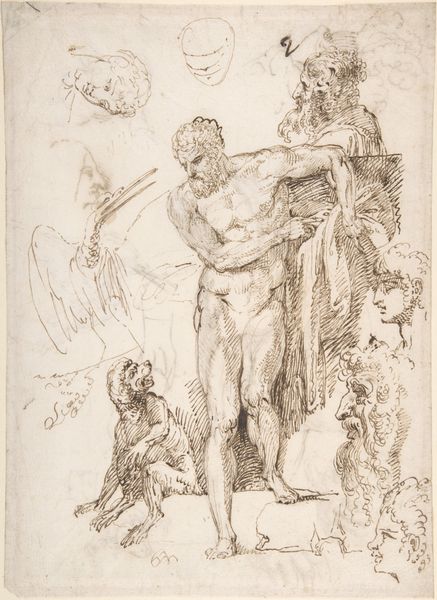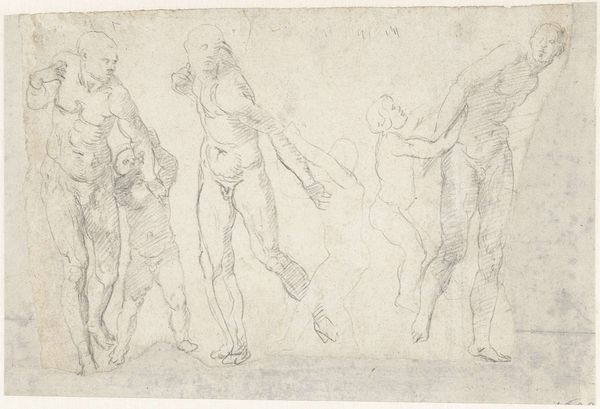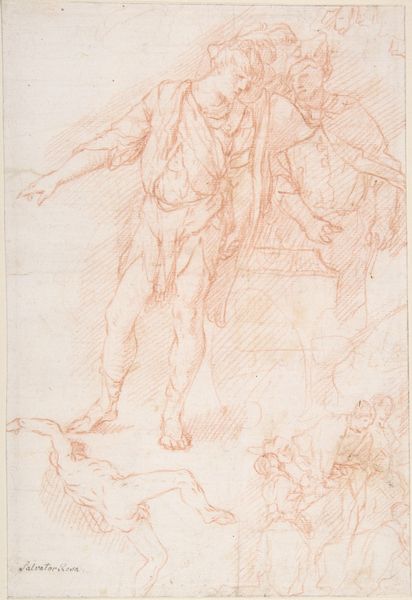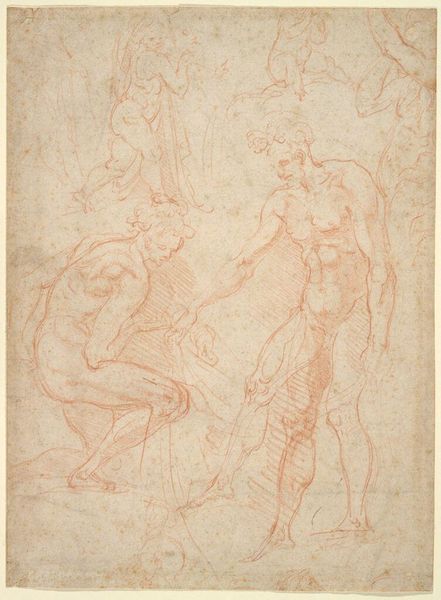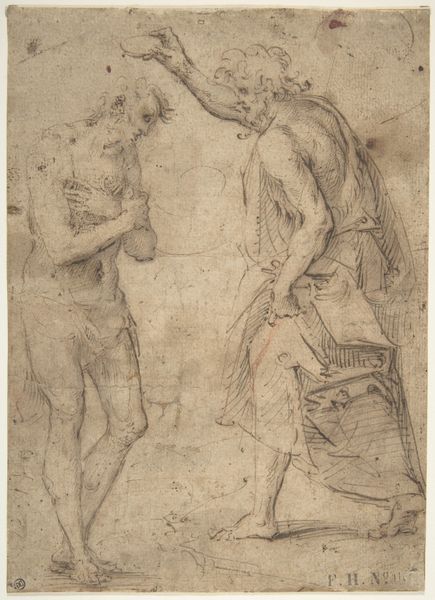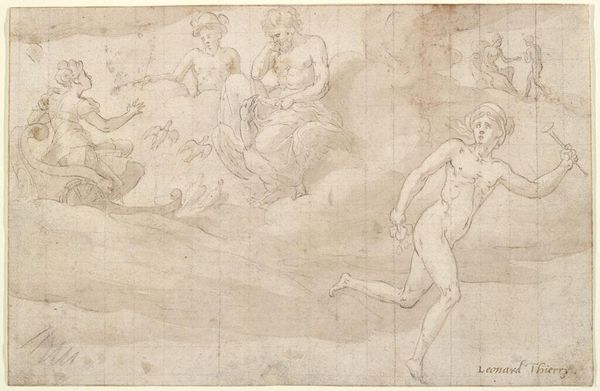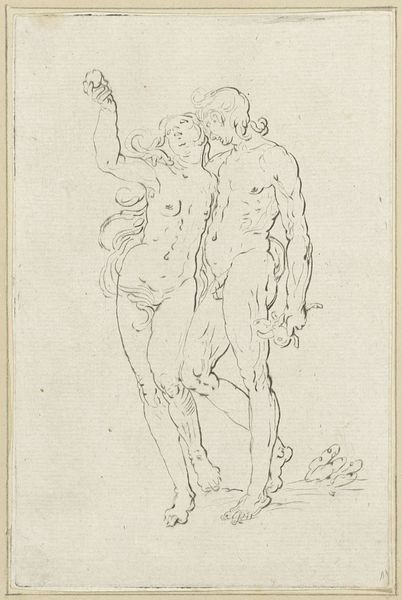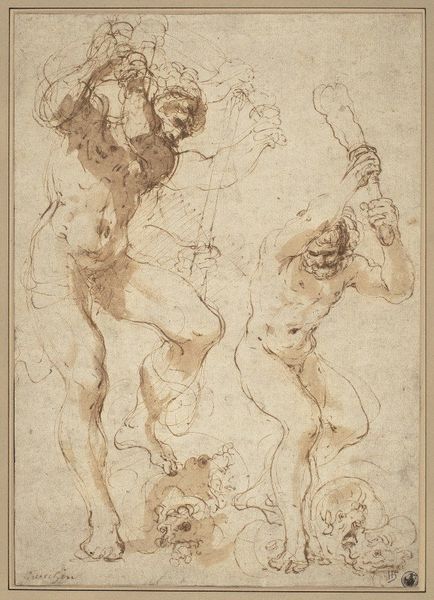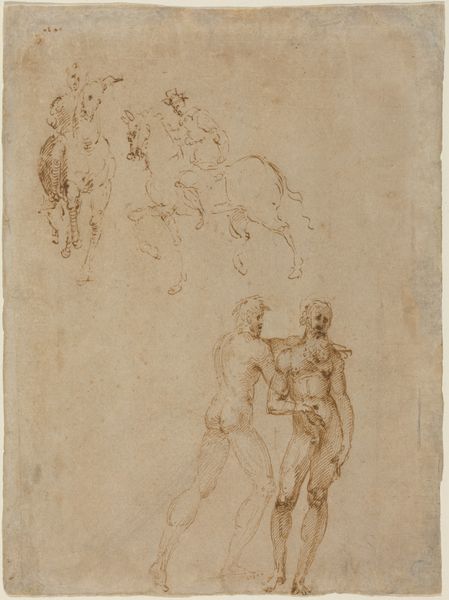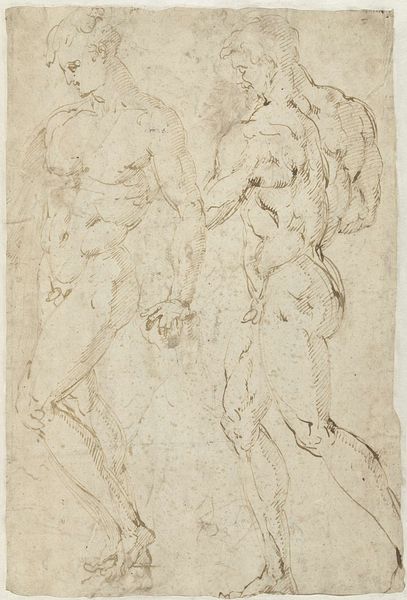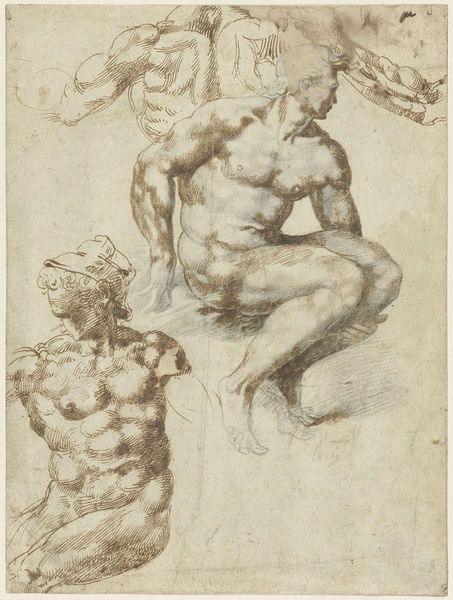
drawing, pencil
#
drawing
#
pencil sketch
#
mannerism
#
figuration
#
11_renaissance
#
pen-ink sketch
#
pencil
#
history-painting
Dimensions: height 177 mm, width 271 mm
Copyright: Rijks Museum: Open Domain
Curator: Here we have Peter Paul Rubens' "Sketches of the Daughters of Cecrops," created sometime between 1611 and 1616. The medium is varied—primarily pencil and pen-ink—reflective of its nature as a preliminary exploration. Editor: Right. It feels…immediate. Like catching a glimpse into the artist's mind as he's wrestling with form and motion. The figures seem to float on the page, unfinished but full of energy. There’s a raw, almost vulnerable quality to the sketchiness that’s really appealing. Curator: Absolutely. This drawing offers valuable insight into Rubens' artistic process. The figures depicted are drawn from Greek mythology, specifically the story of the daughters of Cecrops, King of Athens. This tale explores themes of curiosity, disobedience, and the dangers of the unknown, prevalent motifs in Renaissance art. Considering Rubens’ position as an ambassador and diplomat, it is also a window into the relationship between courtly culture and humanist interest in classical texts. Editor: Mythology, yeah, but what strikes me most is the *gesture*. Look at the weight and curve of that figure at the top-right! You can almost feel the pull of the fabric and sense how the body relates to gravity. I’m getting a sense of what it is to *inhabit* that body...or what it is for Rubens to try and inhabit a body with his line. Is he getting the shoulder angle right? Should the heel lift like that? It feels a lot like *searching.* Curator: Precisely. The use of line serves both a practical and expressive function. The swift, energetic strokes allow Rubens to rapidly define forms and experiment with compositions. The unfinished nature underscores a dynamic tension between creation and process—a dialogue echoed throughout 17th-century artistic and political discourse. Editor: Yeah, it's not about a polished end result here, right? It’s more about that…that struggle, I suppose, the artist *figuring things out.* We don’t usually get to see this—to see genius at work…before it turns into... I don’t know…perfect authority? Curator: And in that way, it democratizes the experience of viewing the work, bringing the artist's intellect and intent into sharper focus for the audience. The Daughters of Cecrops, in this form, provoke a reassessment of both artistic expression and cultural narratives, suggesting how historical interpretations are never definitive, and constantly invite discourse. Editor: Well, after this conversation, I’m more aware that those narratives are more of a "searching," aren't they? Not declarations but really beautiful, suggestive questions. Curator: I think that's an insightful distillation. And certainly one to bear in mind as you continue your gallery tour here at the Rijksmuseum.
Comments
No comments
Be the first to comment and join the conversation on the ultimate creative platform.
